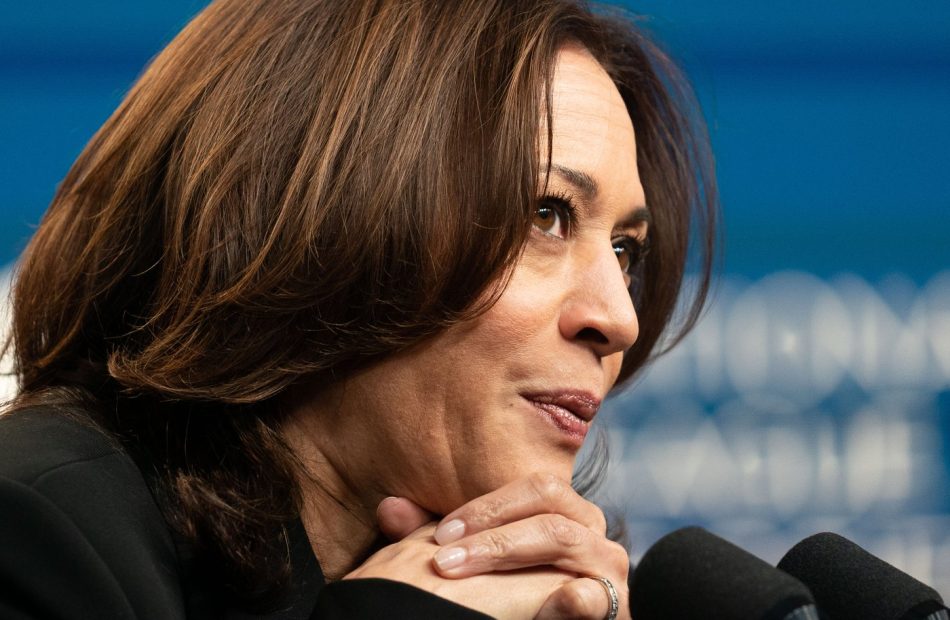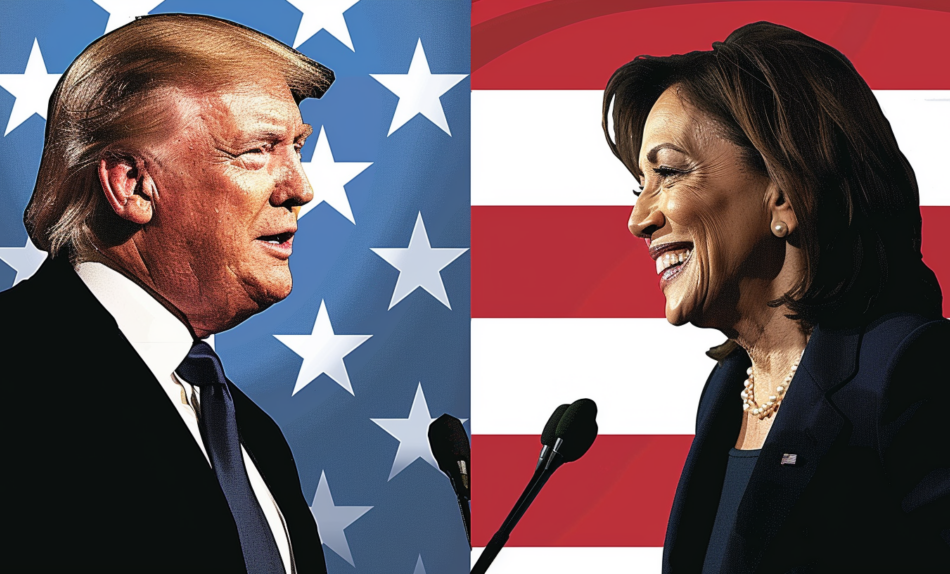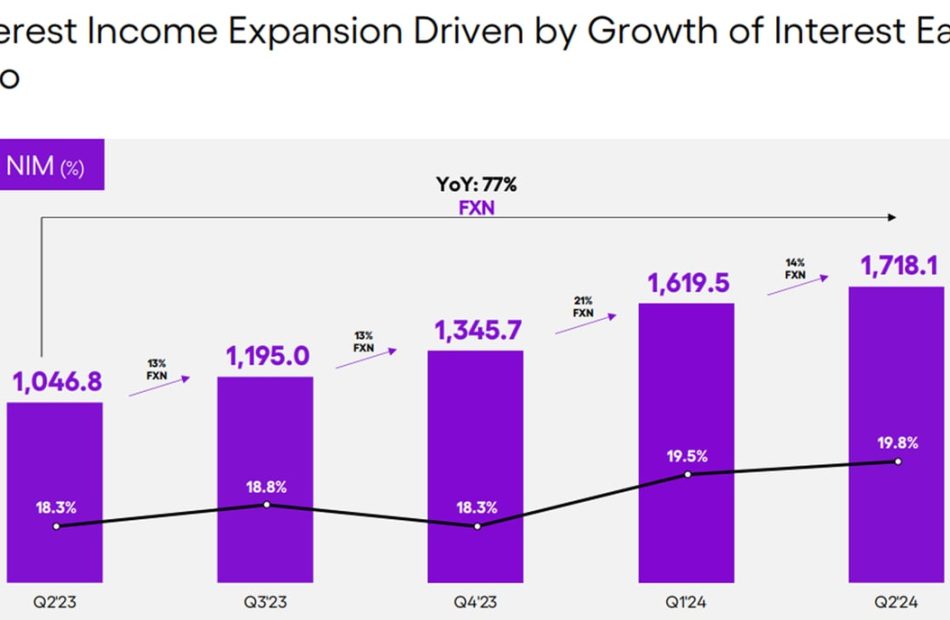Another US oil refinery to vanish with Lyondell Houston plant closing
By Erwin Seba
HOUSTON (Reuters) – Chemical maker LyondellBasell Industries on Friday detailed its long-announced plan to permanently shutter its 263,776 barrel-per-day (bpd) Houston oil refinery in the first quarter of 2025.
The planned closing marks the latest in a wave of U.S. refinery closures as motor fuel demand is expected to peak this decade and decline under pressure from renewable fuels and electric vehicles.
In January, one of the facility’s crude distillation units (CDU) and coker production train will shut, Lyondell refining chief Kim Foley told analysts on a call to discuss third-quarter results.
In February, the second CDU-coker production train, which supplies the gasoline-producing fluidic catalytic cracker (FCC) and ancillary units, will shut, ending motor fuel production, Foley said.
For the fourth quarter of this year, Lyondell plans to run the refinery at 90% of its capacity.
Lyondell originally planned to shutter the Houston refinery in 2023, but extended its life due to strong fuel margins. Last month, rival U.S. refiners Phillips 66 and Valero Energy announced plans to close one California refinery and put two others under review for possible closure in that state.
Phillips 66’s 139,000-bpd Los Angeles refinery will cease production by the end of 2025.
“The refinery, if you think back historically, was originally designed to process in-state California crude production, and that has declined by about 75%,” CEO Mark Lashier said.
Valero CEO Lane Riggs said last month “all options are the table” for the company’s 91,300-bpd Wilmington and 145,000-bpd Benicia, California, refineries. New California laws for maintaining emergency inventories would penalize operators and make their refineries unprofitable, Valero said in a filing with the U.S. Securities and Exchange Commission.
In the last wave of U.S. refinery closures, which occurred between 2017 and 2022, nine crude oil refineries with a combined capacity of 1.2 million bpd were idled or converted to production of renewable fuels.
(Reporting by Erwin Seba in Houston; Editing by Matthew Lewis)
Why Super Micro Computer Stock Was Falling Again Today
Shares of Super Micro Computer (NASDAQ: SMCI), best known for making artificial intelligence (AI) servers, were sliding for the third straight day today as the fallout from its auditor’s resignation continued.
The stock closed down 10.5% and is now down 47% over the last three days since it reported the news.
Start Your Mornings Smarter! Wake up with Breakfast news in your inbox every market day. Sign Up For Free »
On Wednesday, the company said in a filing that its accounting firm, Ernst & Young (EY), had resigned. That news came after the company filed to delay its 10-K report and suffered a short-seller attack from Hindenberg Research.
Supermicro, as the company is also known, said it doesn’t anticipate having to restate any of its quarterly reports. The company said that EY was in the middle of conducting its audit for the fiscal year (ended June 30, 2024), and it hasn’t given a report on Supermicro’s financial statements.
Disagreements between the two sides emerged over the course of EY’s audit, including over Supermicro’s adherence to internal control frameworks. EY told the company it resigned because it couldn’t rely on management’s representations and didn’t want to be associated with the company’s financial statements.
Management said it disagreed with EY’s decision, but the plunge in the stock isn’t surprising. It’s highly unusual for an auditor to resign in the manner that EY did. That it comes after Supermicro’s delay of its 10-K report and the attack from Hindenberg Research makes it even more suspicious.
The company is scheduled to release its fiscal first-quarter earnings after hours on Tuesday. If management doesn’t give investors a satisfying explanation for EY’s departure and clarity on when the 10-K will be completed, the stock will likely fall further.
Before you buy stock in Super Micro Computer, consider this:
The Motley Fool Stock Advisor analyst team just identified what they believe are the 10 best stocks for investors to buy now… and Super Micro Computer wasn’t one of them. The 10 stocks that made the cut could produce monster returns in the coming years.
Consider when Nvidia made this list on April 15, 2005… if you invested $1,000 at the time of our recommendation, you’d have $813,567!*
Stock Advisor provides investors with an easy-to-follow blueprint for success, including guidance on building a portfolio, regular updates from analysts, and two new stock picks each month. The Stock Advisor service has more than quadrupled the return of S&P 500 since 2002*.
Nearly Half Of Workers Are Refusing Promotions. Here's Why 42% Are Asking, 'How Do I Get Out Of This?'
Promotions used to be the dream. The corner office, the fancy title and the big paycheck were all part of what was once considered the ideal career path. But nowadays, things are changing. A surprising number of people say, “No, thanks,” to promotions their managers think are the ultimate reward.
In fact, a recent Randstad survey showed that 42% of American workers aren’t interested in moving up the ladder. There are a few main causes and they have nothing to do with employees’ lack of drive or laziness.
Don’t Miss:
First off, burnout is a big problem at work. Gallup reported that 76% of employees feel burned out sometimes and about 28% say they are often or always burned out. When you’re already overwhelmed, the last thing you want is more responsibilities piled on top of that. Promotions often come with more work and pressure, which can be the tipping point for someone struggling to keep their head above water.
When feeling stressed, workers don’t necessarily want to “power through” anymore. Many of them have started to realize that taking on more might not be the answer and that protecting their mental health is more important than an upgraded job title.
See Also: This Jeff Bezos-backed startup will allow you to become a landlord in just 10 minutes, and you only need $100.
Another reason people are declining promotions is the desire to maintain a work-life balance. As a result of the pandemic, many have developed a new respect for hobbies, family time and the freedom to work from home. Taking a management position often means losing that balance – more hours in the office, more meetings and less flexibility.
Sometimes, a promotion isn’t a promotion. A 2018 survey showed that 39% of employers frequently offer promotions without any pay increase. And even though some employees, especially younger ones, may take the title for the resume boost, it doesn’t always make them happy about the extra workload. Promotions should have a fair trade-off – more money, support and benefits. When they don’t, it’s easy to see why employees feel undervalued and would rather stay where they are.
Trending: Deloitte’s fastest-growing software company partners with Amazon, Walmart & Target – You can still get 4,000 of its pre-IPO shares for just $1,000
As Business Insider reports, climbing the corporate ladder isn’t the goal it used to be. People today are questioning if getting the corner office is worth the trade-offs – and many are deciding it’s not. The idea that every worker should want to rise through the ranks is outdated. For many people, career progression isn’t about fancy titles; it’s about having a job they enjoy, where they feel valued and that allows them the balance they need for a fulfilling life.
Prediction: Election Day Will Represent an Ominous Turning Point for Wall Street
In just three days, Americans will head to the polls or mail in their ballots to determine which presidential candidate — current vice president and Democratic presidential nominee Kamala Harris, or former president and Republican presidential nominee Donald Trump — will lead our great nation over the next four years.
Considering that all three major stock market indexes, the ageless Dow Jones Industrial Average (DJINDICES: ^DJI), broad-based S&P 500 (SNPINDEX: ^GSPC), and growth-stock-propelled Nasdaq Composite (NASDAQINDEX: ^IXIC), have ascended to multiple record highs in 2024, all eyes are on this highly contested presidential race.
Start Your Mornings Smarter! Wake up with Breakfast news in your inbox every market day. Sign Up For Free »
While each candidate brings unanswered questions to the table (and it’s no secret that Wall Street dislikes uncertainty), a potentially bigger issue looms larger for stocks.
Let me preface this discussion by pointing out that campaign promises aren’t always put into action. If the winner on Nov. 5 faces a divided Congress, it’s unlikely they’ll be able to implement many of the policies they’ve proposed while on the campaign trail.
With the above being said, there are proposals on both sides of the political aisle that are cause for concern on Wall Street.
For example, Harris has proposed tackling America’s rapidly rising national debt by increasing taxation on select groups. More specifically, Harris wants to quadruple the share buyback tax for public companies from 1% to 4%, increase the ordinary capital gains tax from 20% to 28%, and lift the peak corporate tax rate by a third, from a historically low 21% to 28%.
While all of these actions would raise federal revenue, they also have the potential to adversely impact the stock market. Buybacks have been an especially useful tool America’s biggest publicly traded companies have used to reward investors and boost their earnings per share (EPS). Apple has reduced its outstanding share count by more than 42% since the start of 2013, which has had a notably positive impact on its EPS.
Meanwhile, Trump wants to impose tariffs on U.S. imports as a way of encouraging domestic production. Tariffs for Chinese products imported into the U.S. would hit 60%, with a 20% tariff on imports from other countries, according to Trump.
The problem with tariffs is they have the potential to spark a trade war, which can increase prices domestically and hamper supply chains. Tariffs can be a mixed bag when it comes to corporate profits.
Here's Why Energy Transfer Stock Is a Buy Before Nov. 6
It’s important to take the long-term view when investing. You should think in terms of years and decades, not months and days. However, it’s also wise to keep an eye on the calendar before investing to get ahead of a potential catalyst.
Those interested in buying midstream giant Energy Transfer (NYSE: ET) should circle Nov. 6 on their calendar. It’s an important date for the master limited partnership (MLP) because it precedes the company’s next earnings report and distribution payment. Here’s why investors might want to buy before that date.
Start Your Mornings Smarter! Wake up with Breakfast news in your inbox every market day. Sign Up For Free »
Energy Transfer will report its third-quarter earnings after the market closes on Nov. 6. The midstream giant will likely report strong results.
The company is coming off an excellent second quarter. Its adjusted earnings before interest, taxes, depreciation, and amortization (EBITDA) jumped 20% to $3.8 billion, while its distributable cash flow soared 32% to $2 billion. The MLP delivered record volumes across several segments, fueled by strong market conditions, recently completed expansion projects, and acquisitions.
That strong momentum likely flowed into the third quarter. Energy Transfer should continue to benefit from its needle-moving merger with Crestwood Equity Partners, which closed last November. In addition, it should continue to get a boost from recently completed expansion projects, including two new ones that started service in July, which should impact its results in the third quarter. And the company closed its highly accretive $3.1 billion acquisition of WTG Midstream in July.
Meanwhile, the company will likely provide an update on its progress in securing additional expansion projects. For example, it took another step toward finally approving its long-delayed Lake Charles LNG project last month. Securing additional expansion projects would further enhance its growth outlook.
Units of Energy Transfer are already up about 20% this year. Reporting stronger-than-expected third-quarter results or progress on securing additional expansion projects could give it more fuel to continue rallying. Because of that, investors might get a better price if they buy before Energy Transfer reports earnings.
Energy Transfer recently declared its latest distribution payment of $0.3225 per unit. That’s a $0.0025-per-unit increase from last quarter and a 3.2% pay bump compared to the year-ago level. That aligns with the MLP’s plan to increase its distribution by 3% to 5% annually.
9 High-Yield Dividend ETFs to Buy to Generate Passive Income
Passive income — what’s not to like? It’s money that comes to you without your having to actively work for it. There are many kinds of passive income, such as income from rental properties and interest from bonds.
A particularly powerful kind of passive income is that from dividend-paying stocks, because they offer the chance of stock-price appreciation, dividend income, and dividend growth. It can be hard to hunt for the best dividend payers out there, though, so you might instead want to simply park your long-term dollars in one or more exchange-traded funds (ETFs) that focus on dividend income.
Start Your Mornings Smarter! Wake up with Breakfast news in your inbox every market day. Sign Up For Free »
An ETF is a fund that trades like a stock — and often tracks a particular index, too. Here are nine high-yield ETFs to consider. (Note that some have yields that are currently on the high side, while others feature lower yields that are likely to grow faster.)
While these ETFs are focused on delivering income, understand that they’re not the only dividend-paying ETFs out there. In fact, a simple S&P 500 index fund is a dividend payer, too — because many of the 500 companies in the S&P 500 pay dividends. The S&P 500 recently sported a dividend yield near 1.3%.
Check out these ETFs below, which are very dividend-focused. At the end of the table is an S&P 500 index fund, for comparison. Note that I’m including a fairly big bunch because I’m trying to encompass funds from several major fund companies. I’m doing so because depending on which company administers the 401(k) account at your workplace, if you have such an account, you might be able to invest in one or more of the funds below via your 401(k).
|
ETF |
Recent Yield |
5-Year Avg. Annual Return |
10-Year Avg. Annual Return |
|---|---|---|---|
|
iShares Preferred & Income Securities ETF (NASDAQ: PFF) |
6.00% |
3.11% |
3.95% |
|
SPDR Portfolio S&P 500 High Dividend ETF (NYSEMKT: SPYD) |
4.18% |
8.67% |
N/A |
|
Schwab U.S. Dividend Equity ETF (NYSEMKT: SCHD) |
3.61% |
13.05% |
12.02% |
|
Fidelity High Dividend ETF (NYSEMKT: FDVV) |
2.87% |
14.91% |
N/A |
|
Vanguard High Dividend Yield ETF (NYSEMKT: VYM) |
2.65% |
11.34% |
10.53% |
|
iShares Core Dividend Growth ETF (NYSEMKT: DGRO) |
2.24% |
12.59% |
12.49% |
|
SPDR S&P Dividend ETF (NYSEMKT: SDY) |
2.22% |
9.55% |
10.42% |
|
Vanguard Dividend Appreciation ETF (NYSEMKT: VIG) |
1.65% |
12.93% |
12.33% |
|
First Trust Rising Dividend Achievers ETF (NASDAQ: RDVY) |
1.49% |
15.05% |
13.21% |
|
Vanguard S&P 500 ETF (NYSEMKT: VOO) |
1.3% |
16.07% |
13.70% |
Data source: Morningstar.com, as of Oct. 22, 2024.
Trump Vs. Harris: A Nail-Biting Pre-Election Showdown
The upcoming presidential election is witnessing a nail-biting competition between former President Donald Trump and Vice President Kamala Harris. With Election Day just around the corner, the race is tightening.
What Happened: Recent national polls suggest a neck-and-neck race between Trump and Harris. Some polls even indicate a slight edge for Trump. A USA Today/Suffolk poll released on Friday shows a close contest in Pennsylvania, a key swing state.
Both Trump and Harris have scheduled events in North Carolina, another swing state, on Saturday. Trump is set to make appearances in Charlotte and Greensboro, North Carolina, and Salem, Virginia. Harris, on the other hand, will rally in Atlanta, Georgia, before heading to Charlotte.
A new Washington Post poll shows Harris leading Trump by a slim margin among likely and registered voters in Pennsylvania. The poll, conducted from Oct. 26-30, also found high voter enthusiasm in the state, with 20% of respondents already having voted and 73% certain to vote.
Also Read: More Than $100M Wagered On Presidential Race On Kalshi
A HarrisX/Forbes poll released Thursday shows Harris leading Trump 49% to 48% among likely voters nationwide and in the seven battleground states. However, her lead in the battleground states has slimmed from a HarrisX/Forbes poll released a week earlier.
In Michigan, Harris leads Trump 48% to 45%, according to a Detroit Free Press poll. In contrast, a Stetson University Center for Public Opinion Research poll shows Trump leading Harris 53% to 46% in Florida. In Massachusetts, Harris leads Trump 61% to 31%, according to the MassINC Polling Group.
Why It Matters: The tight race between Trump and Harris underscores the high stakes and unpredictable nature of the upcoming election.
The outcome in key swing states could potentially tip the balance in favor of either candidate. The high voter enthusiasm indicated by the polls suggests that the election results could hinge on voter turnout.
The slimming lead for Harris in battleground states, as indicated by the HarrisX/Forbes poll, further adds to the uncertainty of the election outcome.
Read Next
This content was partially produced with the help of Benzinga Neuro and was reviewed and published by Benzinga editors.
Market News and Data brought to you by Benzinga APIs
© 2024 Benzinga.com. Benzinga does not provide investment advice. All rights reserved.
Billionaire Israel Englander Just Tripled His Investment in This Stock That Warren Buffett and Cathie Wood Also Own
Billionaire money managers often have strikingly different approaches to investing. Consider Warren Buffett, whose holding company, Berkshire Hathaway, only owns about 45 stocks at a given time, and Israel Englander, head of Millenium Management, who owns several thousand. Add someone like Cathie Wood into the mix, who runs investing firm Ark Invest and buys disruptive tech stocks for Ark’s exchange-traded funds (ETF), and you have three different investing mindsets.
What’s something they all have in common? They all own Amazon stock, which is a no-brainer stock for any portfolio, and they also all own young upstart Nu Holdings (NYSE: NU) stock.
Start Your Mornings Smarter! Wake up with Breakfast news in your inbox every market day. Sign Up For Free »
Buffett, or someone on his team, first recognized Nu’s potential when he invested $500 million in the company before it went public in 2021. It now owns 107,118,784 shares, or 2.2% of the company, although it makes up a tiny 0.5% of Berkshire Hathaway’s equity portfolio. Cathie Wood owns 1,238,918 shares as part of Ark’s Fintech Innovation ETF, accounting for 2.1% of the portfolio. Millennium owns 39,192,266 shares of Nu, which is a 371% increase in his position from last quarter.
Let’s see why three very different money managers are all excited about this growth stock.
Nu is an all-digital bank based in Brazil. It has also recently entered Mexico and Colombia, but they’re small businesses for now. It’s growing quickly in every way, and it has been reporting incredible results every quarter since it went public.
It added 5.2 million customers in the 2024 second quarter, reaching a total of 104.5 million. Most of them are still in Brazil, where it has 95.5 million, or more than half of the adult population. Nu was a challenger when it premiered just over 10 years ago, offering a simple and easy-to-use alternative to the rigid banking services offered by a handful of large, traditional banks. Banking was so complicated and expensive before Nu came onto the scene that a large percentage of the population didn’t even have a bank account. Nu has a leg up on the legacy banks since it was built to be flexible and agile, and customers are flocking to its platform. That’s something Buffett loves.
That leaves about 9 million customers in its other two markets, 7.8 million of whom are in Mexico, and Nu’s performance in Mexico has already surpassed how it did in Brazil at a similar growth stage. It added 1.2 million customers in Mexico in the second quarter, or a 15% increase over last quarter.








